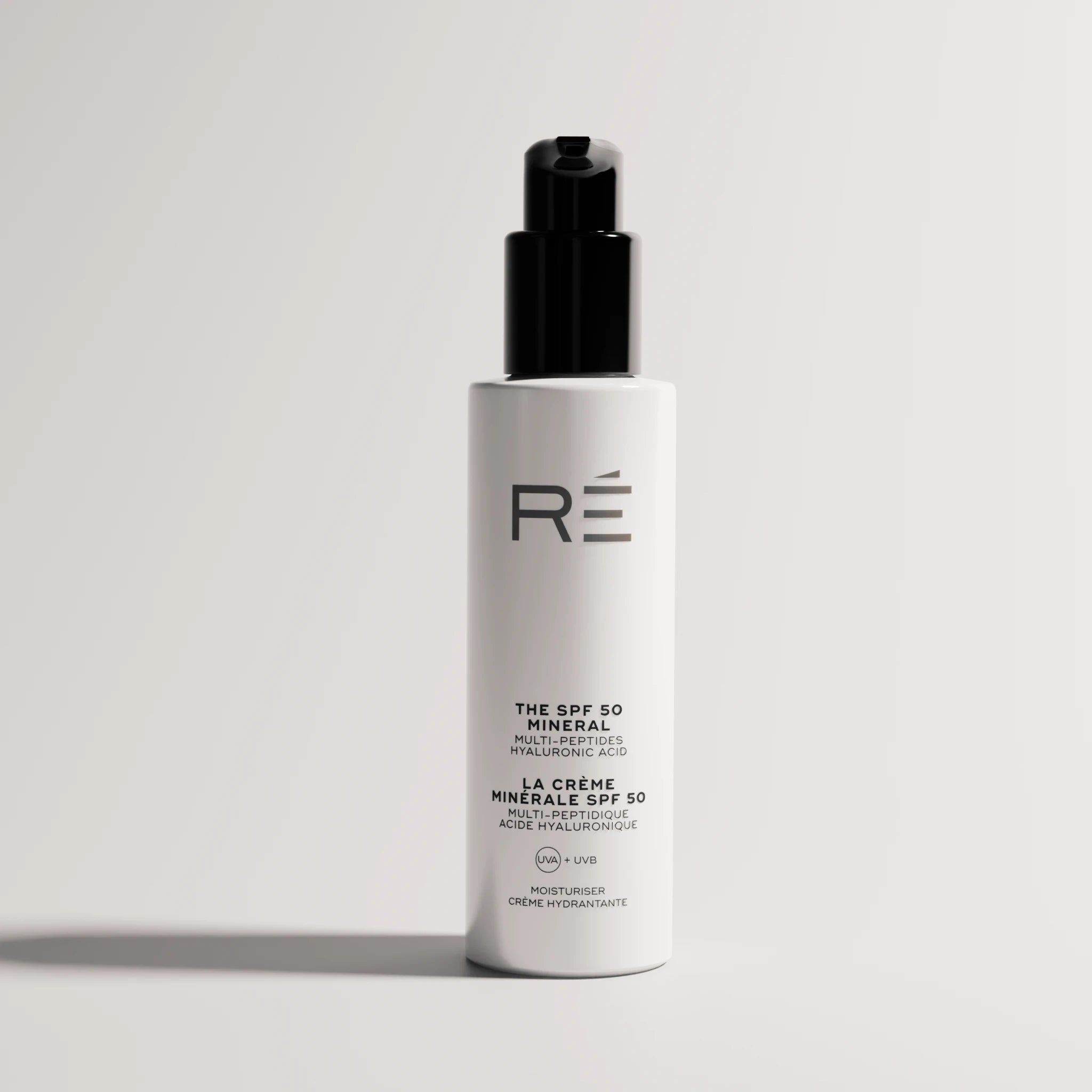The Difference Between Chemical and Mineral Sunscreen
When it comes to sun protection, not all SPF formulas are created equal. The two main categories — chemical and mineral sunscreens — work in very different ways, and understanding the difference can help you choose the formula that suits your best.
At RÉ, we created two high-performance daily SPFs — The SPF 50 (a chemical sunscreen) and The SPF 50 Mineral (a mineral sunscreen).
Chemical SPF
Uses organic filters like avobenzone, octocrylene, or octinoxate to absorb UV rays and transform them into heat, which is then released from the skin. This makes them lightweight, invisible, and easy to wear daily.
How it works: Absorbs UV and converts it into heat
Texture: Lightweight, often invisible on skin
Best For: Everyday wear, under makeup
Mineral SPF
Also called physical sunscreens, use zinc oxide or titanium dioxide to sit on top of the skin and act as a shield, reflecting UV rays away.
How it works: Physically reflects UV away
Texture: Midweight, typically heavier than chemical as the formula sits on the skin
Best For: Sensitive skin
Which Should You Choose?
Choose The SPF 50 if you want an invisible, lightweight finish that easily absorbs into the skin.
Choose The SPF 50 Mineral if your skin is easily irritated, you prefer a more soft mattifying finish.
References
-
Wang, S. Q., & Lim, H. W. (2011). Current status of topical photoprotection. Journal of the American Academy of Dermatology, 64(4), 748-758.
-
Draelos, Z. D. (2010). The science behind skin care: Sunscreens. Journal of Cosmetic Dermatology, 9(S1), 18-23.
-
Diffey, B. L. (2010). Sunscreens: Expectation and realization. Photodermatology, Photoimmunology & Photomedicine, 26(6), 321-324.









